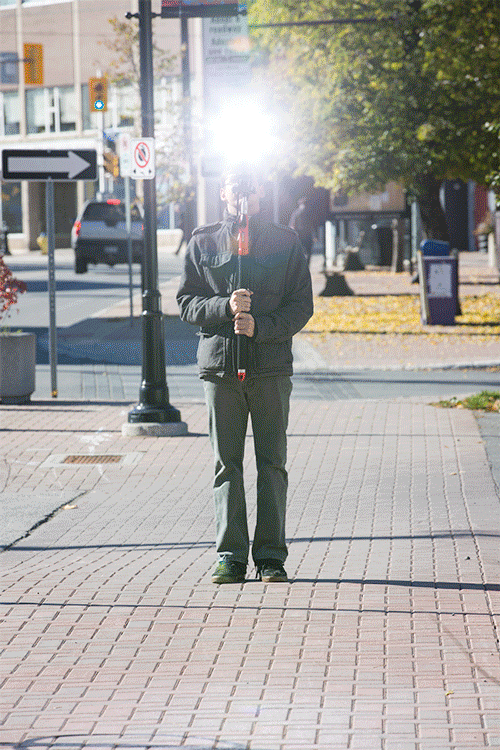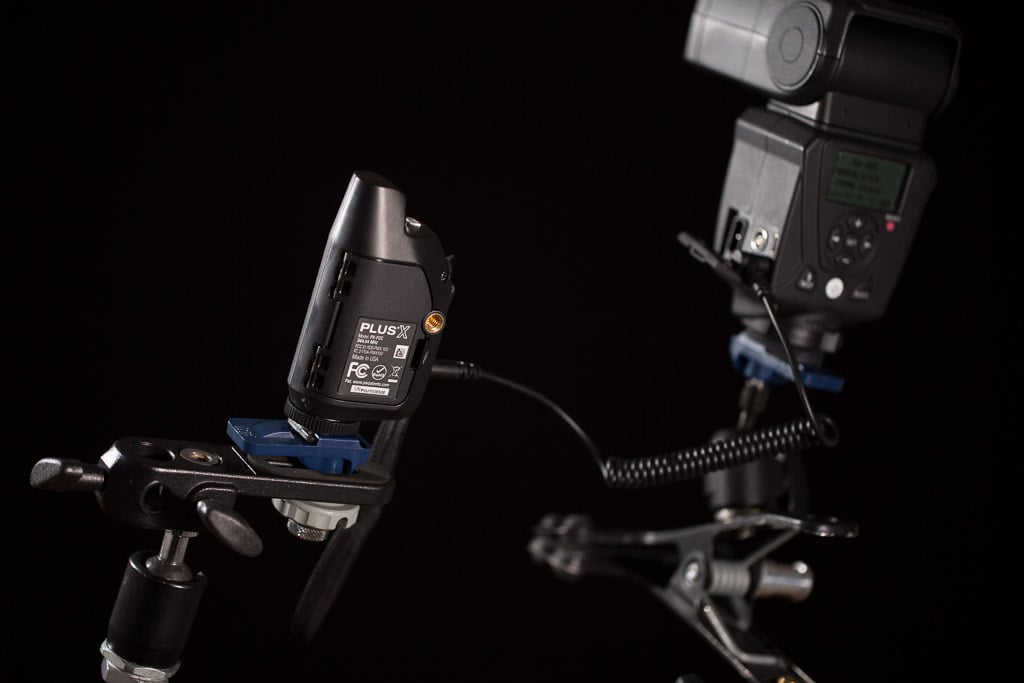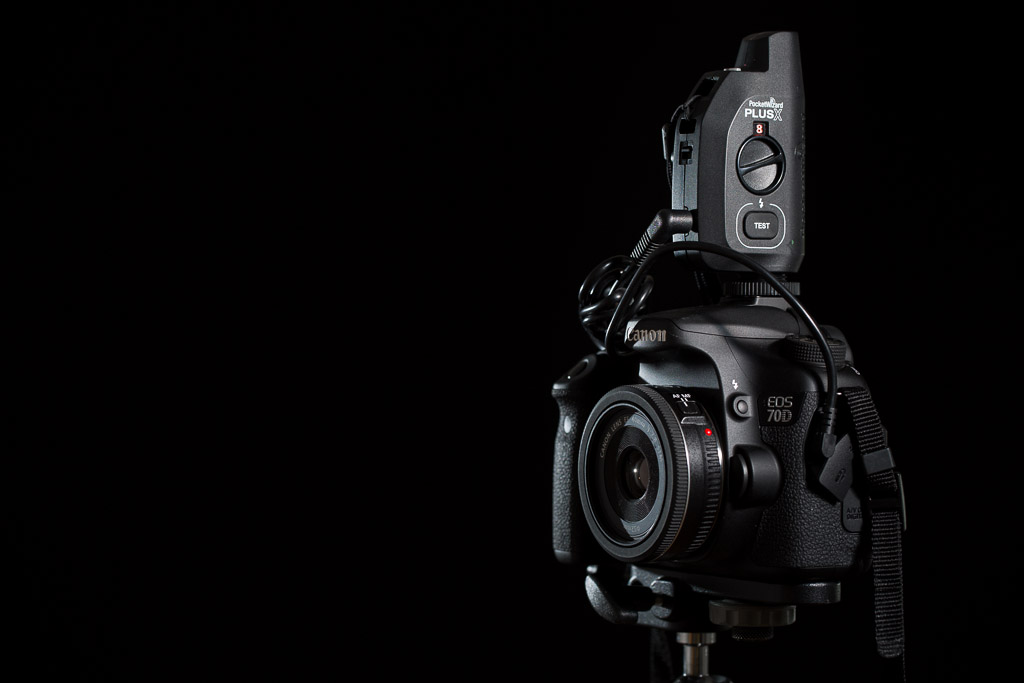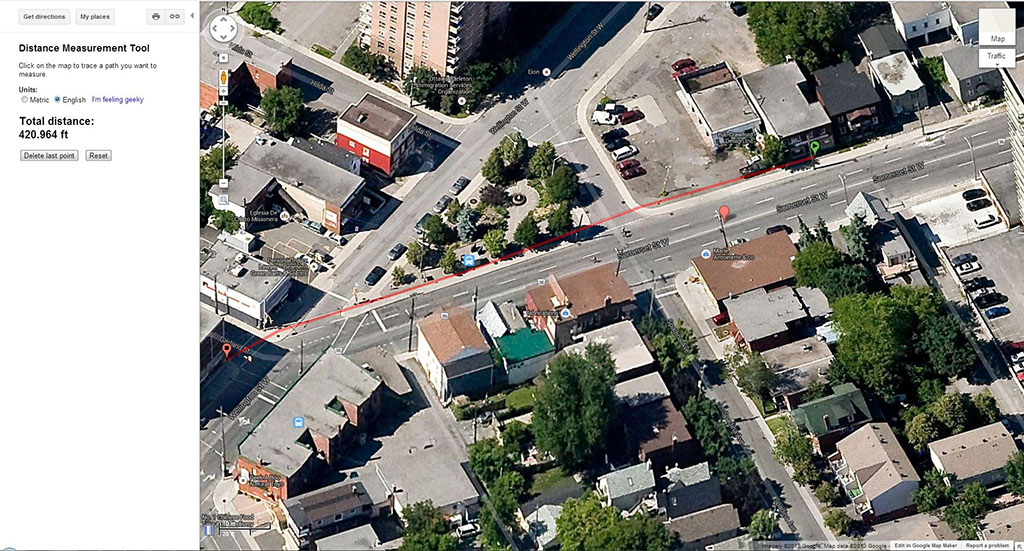Review – PocketWizard PlusX
By: Justin VanLeeuwen | Twitter
Discuss the PocketWizard PlusX
Pocket Wizard has long been the industry’s standard name in radio transmitting remote flash triggers. While many other companies have produced products with similar, or even additional, functionality, none have proven to be as reliable or as widely accepted for professional use as the Pocket Wizard. My first introduction to Pocket Wizards (PW's for short) was with their Transceiver II line. These were around $200 at retail, would act as a transmitter and a receiver, and included four channels that a user could switch to avoid crossing radio frequencies with others in the area. They were dead simple, worked spectacularly well, and had an incredibly reliable (and long) transmission range.
These remained PW's signature transceiver for years, even after they produced the MiniTT1 and FlexTT5 that promised TTL flash triggering (with mixed results). Recently, Pocket Wizard re-launched their transceiver line with the Plus III. It carried with it the same pedigree, a host of new features and a reduced retail price. But there is still a dearth of cheap radio triggers flooding the market, from sketchy eBay specials to legitimate competitors at low prices. Pocket Wizard was leaving a significant entry-level market behind. Thankfully they now have a great answer to this: the Pocket Wizard Plus X, which Pocket Wizards net to us for review.
Build
Like the Plus II transceiver before it, the Plus X is essentially a dummy trigger. It transmits, it receives, and it has a ridiculously simple dial to switch between ten channels. The dial turns and switches through the channels simply and effectively. When it is turned on, the numbers are lit up in orange. Overall, the Plus X has a bit of a plastic feel, and feels hollow compared to other models. The antenna is now buried under a hard plastic shell and some of the space inside of the unit lets me hear a hollow “spring” noise when I put it down too hard. Maybe the board inside is impact protected? I'm not saying it's not robust, and indeed, may be more than the Plus II ever was, especially with the antenna encased. A large rubber “test” button rests firmly on the side of the unit and, as the only button, can't be missed.
Unlike previous PW's, except the Plus III, the Plus X slides into your camera's shoe “sideways” in that the controls are at the camera’s left side leaving a more slender front-to-back profile of the radio. The foot of the Plus X itself, like all PW's, is plastic. This has often been the weak point in the whole setup for me. While no remote trigger that I know of offers a better metal foot, I have broken the plastic in this area enough to have to send it in for repair. The plastic foot is easily damaged if your light-stand gets blown over, breaking where it meets the metal cold-shoe or Frio. You may also someday *ahem* drop your camera: the foot will break off at a corner or the whole side of the base, which may be preferred to ripping out your hot-shoe from the camera.
One of the best features in the PW Plus III is an LCD screen indicating battery level. While the Plus X has no such screen, the Status LED fills the role by blinking green when full, yellow at less than half, and a faster red when under a quarter power. It is useful, since the battery is just one of many potential points of failure when working with a separate radio transmitting system.
I was pleasantly surprised to find that Pocket Wizard has improved their accessory cable quality considerably. I was never impressed with the simple (and cheap feeling) PC sync cables they included in the original package. The Screw-lock PC Sync (for flashes like a Canon 600EX-RT or Nikon 910) will connect more securely to your speedlight than one without the lock. The coiled cable also gives you a greater working distance and some flex in how you choose to dangle the trigger from the included lanyard*. Also included is a mini to mini connector (the same as your headphone jack) and a stereo headphone adapter for your older studio strobes. I used to pay almost $15 a piece to upgrade to such cables from the stock ones, now I don't have to. Thank you Pocket Wizard.
*Note: in the instructions, Pocket Wizard consistently shows the transceivers affixed to a Manfrotto Magic arm by either a cold-shoe or the screw port by the battery cover, always perfectly perpendicular to the ground and straight up (even above the light). Of course, in reality, we all just bungee cord or dangle the unit wherever we can.
Features:
Ten channels on a rotational dial to avoid interference with other PW users or, potentially, to set up different groups of flashes assigning each group its own channel to work off of. A single transceiver both transmits, and receives the signals, though you can set it to be transmitting only by holding the TEST button when powering on.
An interesting feature new to the Plus X is an automatic relay mode, which I found surprisingly useful. What you do is to use a Plus X as a transmitter on a set channel (let's say Channel 1) and a second to act as a transceiver (also on Channel 1) while attached to your camera with a remote camera cable (http://www.pocketwizard.com/products/cable_accessory/cameracables/) (Not Included). A third (or more) pocket wizard is then set on the next channel up (Channel 2 in this case) and will act as a receiver to any flash head you want to trigger. Pressing the “Test” button on the first PW will then set off the camera's trigger which will, in turn, relay to trigger the strobe. This allows the photographer to be more mobile and away from the camera while taking pictures or, basically, the ultimate selfie setup.
The Plus X transceiver is rated to trigger flashes at 1/250th of a second, but if you’re an owner of some of the slowest cameras on the planet like me (5DMKIII and 5DMKII), your mileage may vary, for my use, I could get away with 1/160th on a 5D3. 1/200th showed the slight hint of banding at the bottom, and 1/250th was flat out.
I should also note that the Plus X is backwards compatible with the current and previous Pocket Wizard models. For those still using a Plus II, you now get a trigger with a few more features for half the price of the original and you should be able to use them seamlessly.
Range
Range is a huge qualifier for buying radio triggers. Getting your flash off the camera is, obviously, the primary goal of these and an important function of a trigger is just how much distance you can cover with them. This depends wildly on a number of variables: level ground, proper placement, buildings, walls, plumbing, water, competing radio frequencies and even temperature. But, we hope, they will serve us better than our flash’s built-in infra-red triggering, though without specific control of the flashes, especially outdoors where IR is rendered nigh useless. Some flashes operate on an optical trigger which also relies on line of sight or at least sight of bounce as the light travels around spaces. Again, optical triggers are limited when working outdoors, over great distances, or even beyond obstructions of any sort. Finally, I've written extensively about the Canon 600EX-RT radio triggering, a true game-changer with their ability to completely remotely control a flash, including its settings, but its one flaw also resides in distance: they cap out at about 98 feet. The Pocket Wizard Plus X's are designed for a maximum range of 1600 feet. This is under ideal settings, so I decided to take it outside for a “real world” test on a fairly common public street. As you can see below, we got to about 400 feet away before it stopped triggering (a Canon 5D3 and a LumoPro LP180), which is far enough for most practical and common uses and considering I was shooting with a 200mm lens.

Who's it for
If the Plus III's offer just a bit too many features, or the prospect of investing an extra ~$40 a unit for your flash is daunting the Plus X is a worthy alternative. Heck, with the relay mode alone I could even say you don't even need a flash to want nor need a good pair of Pocket Wizard Plus X's; you can reliably trigger your remote camera from a great distance too. Set one up behind a goal post at a soccer game, clamp your camera in an awkward-to access area out of reach, the Pocket Wizard Plus X's will take care of you when it's time to actually take the picture.
Conclusion
With all the unreliable, untried, and un-warrantied triggers on the market, having something reliable and affordable is important to pros and amateurs alike. Pocket Wizard offers two years of warranty coverage on your transceivers, and with a long and reliable background in the photographic community, you can count on them being there for at least that long. The ability to mix and match your PWs with previous models will add value if you're already invested in the Pocket Wizard infrastructure and, as with most name brands, they will likely maintain their resale value if you decide to go another route. If you want affordable, dead simple, and highly reliable transceivers for your camera or flash, look no further than the Pocket Wizard Plus X.
Purchase Options:
- PocketWizard PlusX Transceivers:Adorama
Pros:
- Dead-simple to use
- Inexpensive and reliable
- Superior distance to many similarliy priced triggers
Cons:
- Plastic foot is easy to break
- Real-world range tests don't measure out to ideal spec (but when do they?)




